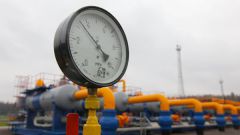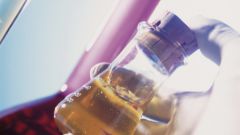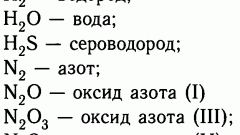Instruction
1
One of the formulas for the volume of the solution: V = m/p, where V is the solution volume(ml), m is the mass(g), p is the density(g/ml). If you want to find an additional a lot of, this can be done by knowing the formula and the amount of the desired substance. Using the formula of a substance we can find its molar mass, adding the atomic masses of all the elements included in its composition. For example, M(AgNO3) = 108+14+16*3 = 170 g/mol. Then we find the mass formula: m = n*M, where m is the mass(g), n – amount of substance(mol), M – molar mass substance(g/mol). It is understood that the amount of substance given in the problem.
2
The following formula for finding the volume of the solution is deduced from the formula of molar concentration: C = n/V where c is the molar concentration of solution(mol/l), n – amount of substance(mol), V is the volume of solution(l). Output: V = n/c. The amount of the substance can additionally be found by the formula: n = m/M where m is the mass, M is the molar mass.
3
The following is the formula for finding the volume of a gas. V = n*Vm where V is the volume of gas(l), n – amount of substance(mol), Vm is molar volume of gas(l/mol). Under normal conditions, i.e. pressure equal to 101 325 PA and a temperature of 273 K molar volume of gas is constant and is equal to 22.4 l/mol.
4
For the gas system there is a formula: q(x) = V(x)/V, where q(x)(Fi) is the volume fraction of the component V(x) is the volume of component (l), V is the volume of the system (l). From this formula we can deduce the other 2: V(x) = q*V and V = V(x)/q.
5
If the problem is present the reaction equation to solve the problem, you should use it. From the equation we can find number of any substance is equal to ratio. For example, CuO + 2HCl = CuCl2 + H2O. Hence we see, that at interaction of 1 mole of copper oxide and 2 mol of hydrochloric acid to make 1 mol of cupric chloride and 1 mole of water. Knowing the condition of the problem a number of substances are only one component of the reaction, you can easily find the number of all substances. Let the amount of substance of copper oxide equal to 0.3 mol, so n(HCl) = 0.6 mol, n(CuCl2) = 0,3 mol n(H2O) = 0,3 mol.
Note
Don't forget about the units!




